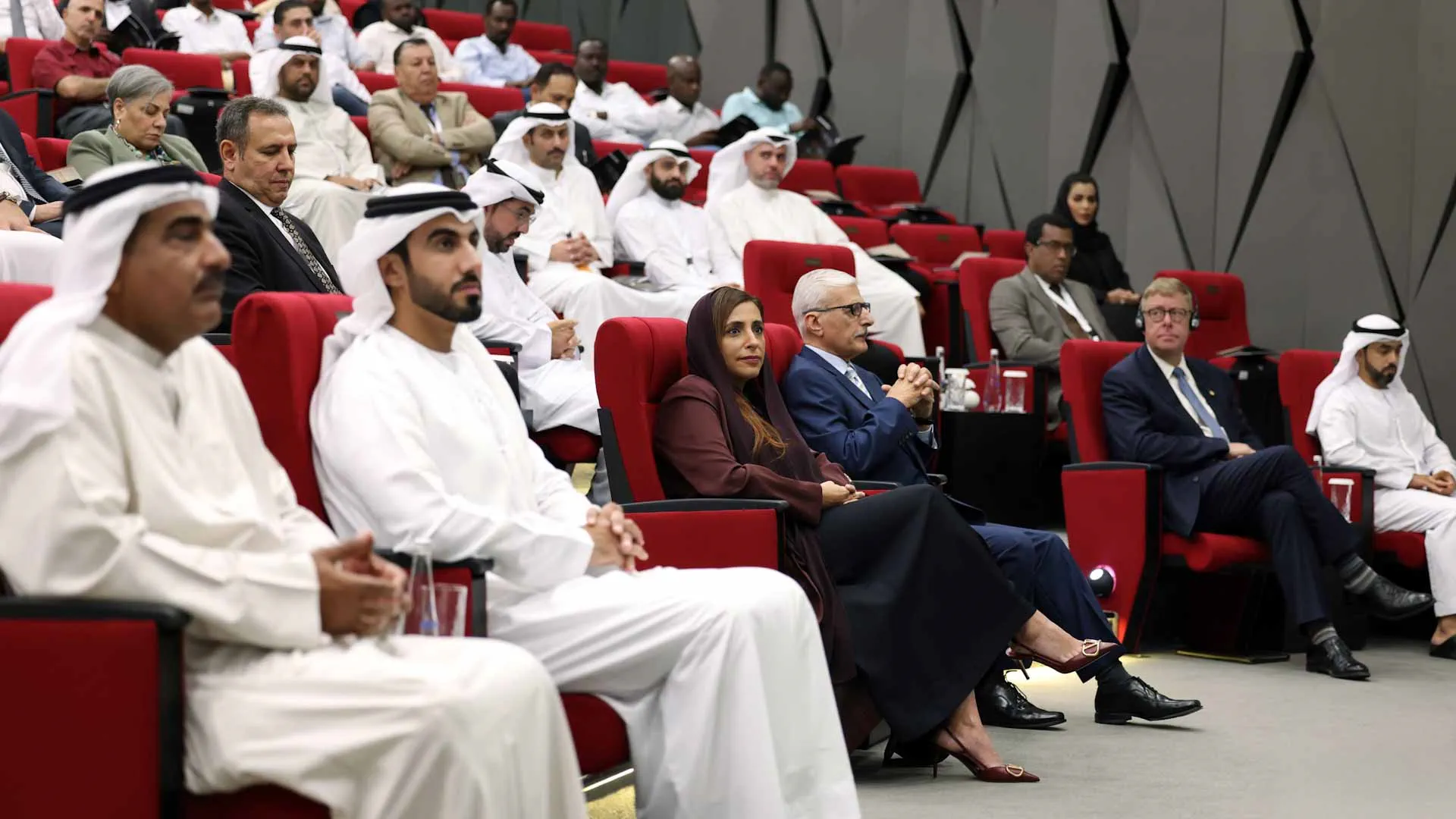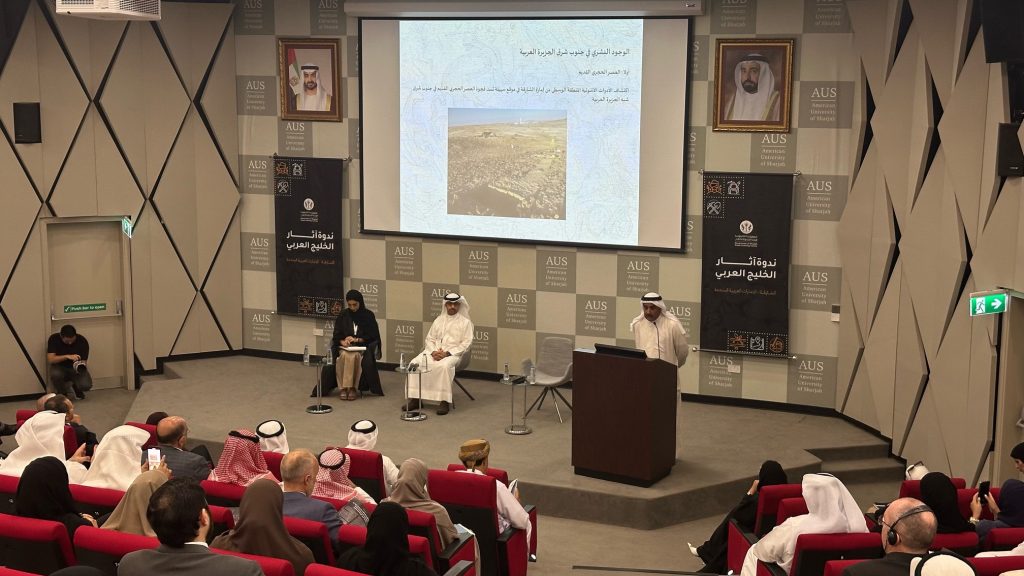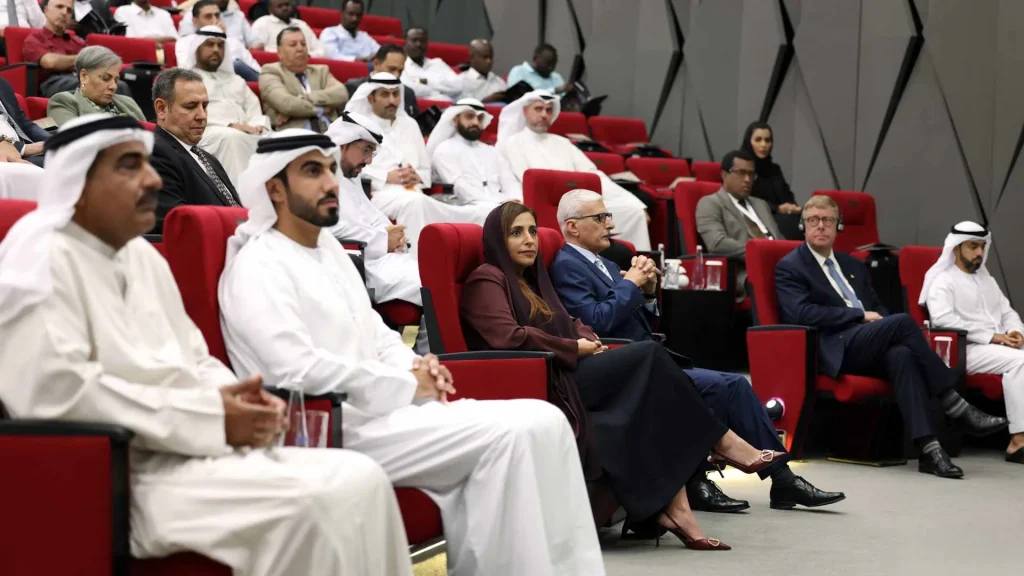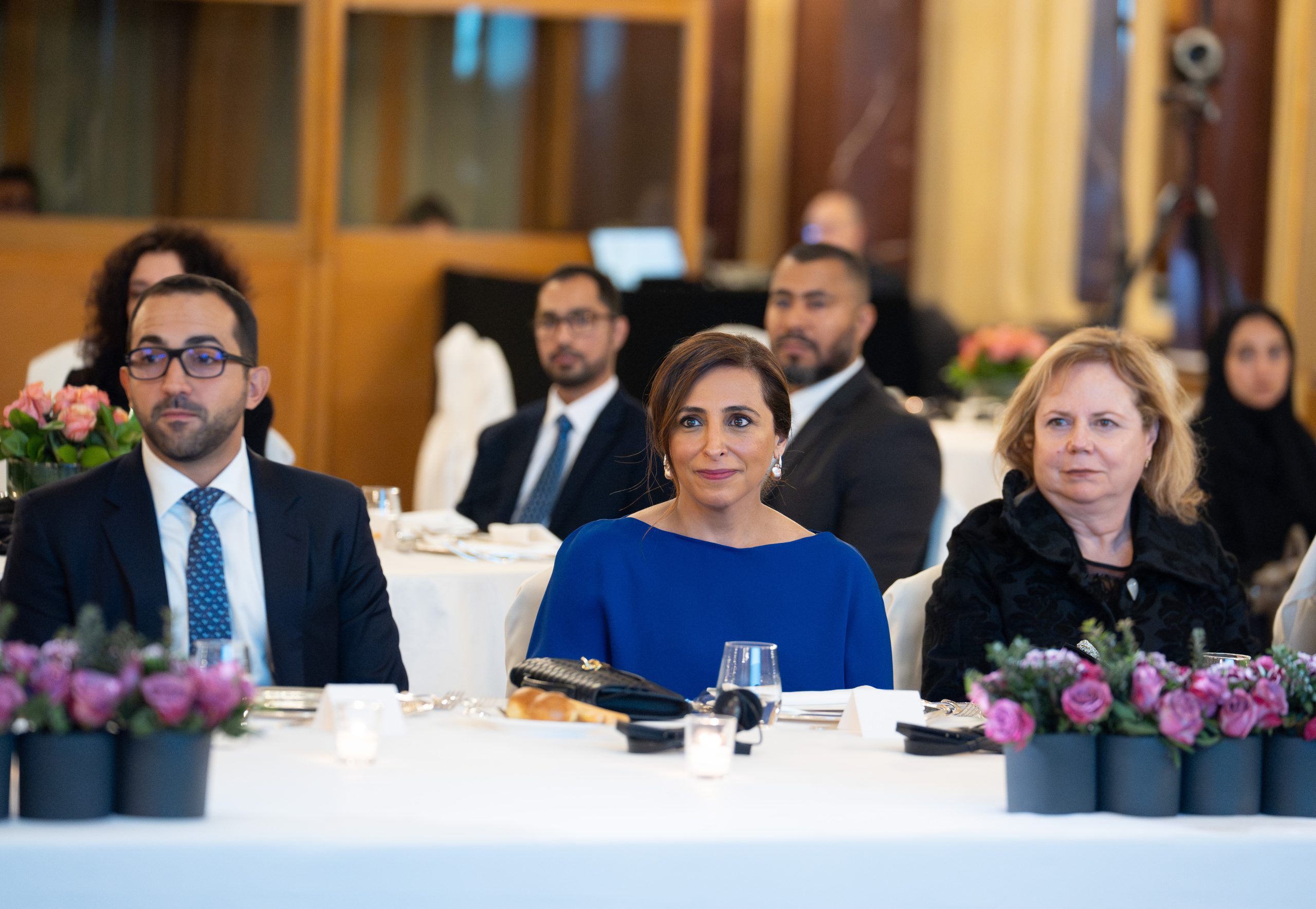In the presence of Sheikha Bodour Al Qasimi,
Sharjah Archaeology Authority illuminates the horizon of archaeological research with the opening of the international symposium “Archaeology of the Arabian Gulf”
Under the patronage of His Highness Sheikh Dr. Sultan bin Mohammed Al Qasimi, Member of the Supreme Council and Ruler of Sharjah, and in the presence of Sheikha Bodour bint Sultan Al Qasimi, Ambassador of the Faya Palaeolandscape World Heritage Nomination File, and President of the American University of Sharjah (AUS), the Sharjah Archaeology Authority (SAA), in collaboration with the AUS, inaugurated the international symposium titled “The Archaeology of the Arabian Gulf” at the university campus on September 23-24, 2024. The event aims to strengthen collaboration among researchers specializing in archaeology from the Gulf Cooperation Council (GCC) countries and several Arab nations, highlighting the latest archaeological discoveries and enhancing ways to preserve cultural heritage.
The symposium hosts a distinguished group of archaeologists and experts from GCC countries, as well as participants from Jordan and Morocco, reflecting the diversity of expertise enriching this significant archaeological event. The discussions focus on the latest archaeological findings in the Gulf region, showcasing the prominent historical, economic, and political role the region has played across various ancient civilizations.
Archaeology as a Key to Understanding the Past and Shaping the Future
H.E. Eisa Yousif, Director General of the Sharjah Archaeology Authority (SAA), emphasized the importance of the symposium as a unique opportunity to deepen the shared understanding of the region’s cultural and archaeological heritage. He noted that archaeology plays a crucial role in defining historical identity and serves as a key to understanding the past and shaping the future. He further explained that international cooperation, both scientific and practical, between the Gulf countries and the world plays a pivotal role in supporting efforts to protect the region’s cultural heritage.
He added: “This symposium serves as a comprehensive platform for researchers from various countries to present their papers and engage in constructive discussions aimed at addressing the challenges facing archaeology in the Arabian Gulf. We believe that cooperation between academic and research institutions extends beyond the mere exchange of information. It also includes developing new methodologies for excavation and preservation of archaeological sites. The SAA is committed to documenting and protecting the archaeological heritage in Sharjah, and we continuously seek to share our experiences and expertise to enhance archaeological research and offer innovative solutions to the challenges this field faces.”
The symposium kicked off with several scientific sessions, beginning with the opening session titled “The Latest Archaeological Discoveries in the Emirate of Sharjah,” presented by H.E. Eisa Yousif. He highlighted significant discoveries in multiple archaeological sites across the emirate, underscoring their importance in enriching the region’s historical knowledge.
Initial Results of Excavations at Maqabah Site (Juma Farm)
In the same session, Dr. Salman Ahmed Al Mahari, Director of Antiquities and Museums at the Bahrain Authority for Culture and Antiquities, presented his paper titled “Initial Results of Excavations at Maqabah Site (Juma Farm).” His paper shed light on prominent and significant archaeological findings, particularly in terms of time periods and the types of remains uncovered. He noted that these excavations, conducted by a specialized Bahraini team, revealed diverse historical elements within a previously thought mound dating back to the Tylos period. However, careful excavation over five months uncovered burials dating to the Late Dilmun period in addition to burials from the Tylos period. The most unique finding at the site was the discovery of mud pits and narrow channels connecting them, suggesting they were used as agricultural basins similar to those in modern Bahraini farms but in different sizes. Excavations also revealed rocky elevations with distinctive pits, alongside an Islamic Mosque and cemetery.
Over 40 Years of Dedication to Archaeological and Anthropological Research in Morocco
The first day of the symposium featured several sessions with participants from Morocco, Qatar, Oman, and Kuwait. Dr. Abdeljalil Bouzouggar, Director of the National Institute of Archaeology and Heritage (Morocco), shared insights from his extensive 40-year career dedicated to archaeological, anthropological, and archaeological research in Morocco. He highlighted the most significant discoveries and efforts in this field, noting that the aim of his presentation was not only to address the Islamic archaeological findings but also to introduce the results of excavations and urban studies carried out by the institute since its establishment.
Comprehensive Review of Qatar’s Cultural Heritage Preservation Efforts
Adel Abdullatif Al Moslamani, Director of Cultural Heritage Conservation at Qatar Museums, provided a comprehensive review of Qatar’s efforts in preserving cultural heritage. He highlighted the initiatives and programs focused on protecting and promoting the country’s cultural identity.
Al Moslamani explained that the Architectural Conservation Department plays a pivotal role in safeguarding architectural heritage and archaeological sites through restoration and maintenance projects, ensuring the sustainability of these sites for future generations. He shared examples of successful projects, including the restoration of the Al Zubarah Archaeological City, Murwab Fort, and Ar Rakiyat Fort, as well as the traditional villages of Ain Mohammed and Al Jamil, among other heritage sites.
Findings from Archaeological Surveys and Excavations at Sohar Free Zone
Khamis bin Nasser Al Aufi, Head of the Archaeology and Museums Department at the Ministry of Heritage and Tourism in Oman, presented a scientific paper on the results of archaeological surveys and excavations conducted at the Sohar Free Zone.
The Latest Archaeological Discoveries on Failaka Island
Finally, Anwar Ismail Al-Tamimi, a researcher from Kuwait, presented “The Latest Archaeological Discoveries on Failaka Island,” one of Kuwait’s most important archaeological sites. He highlighted: “Kuwait boasts a rich cultural heritage reflecting its ancient history. The findings of archaeological surveys and excavations, which began in the late 1950s, reveal evidence of human settlement on Kuwait’s land dating back to the Neolithic period. These discoveries indicate the continuous presence of flourishing civilizations until the successive Islamic periods, as evidenced by the structures they left behind, including residential, administrative, and religious buildings, as well as ports. Artifacts discovered reflect both local industries and those imported from neighboring or distant civilizations. Fieldwork in Kuwait continues to this day, aiming to shed more light on these civilizations and highlight their role in shaping human history regionally and globally.”
The symposium concluded with a series of recommendations focused on enhancing archaeological research, fostering regional cooperation, and ensuring the sustainable preservation of cultural heritage in the Arabian Gulf.






